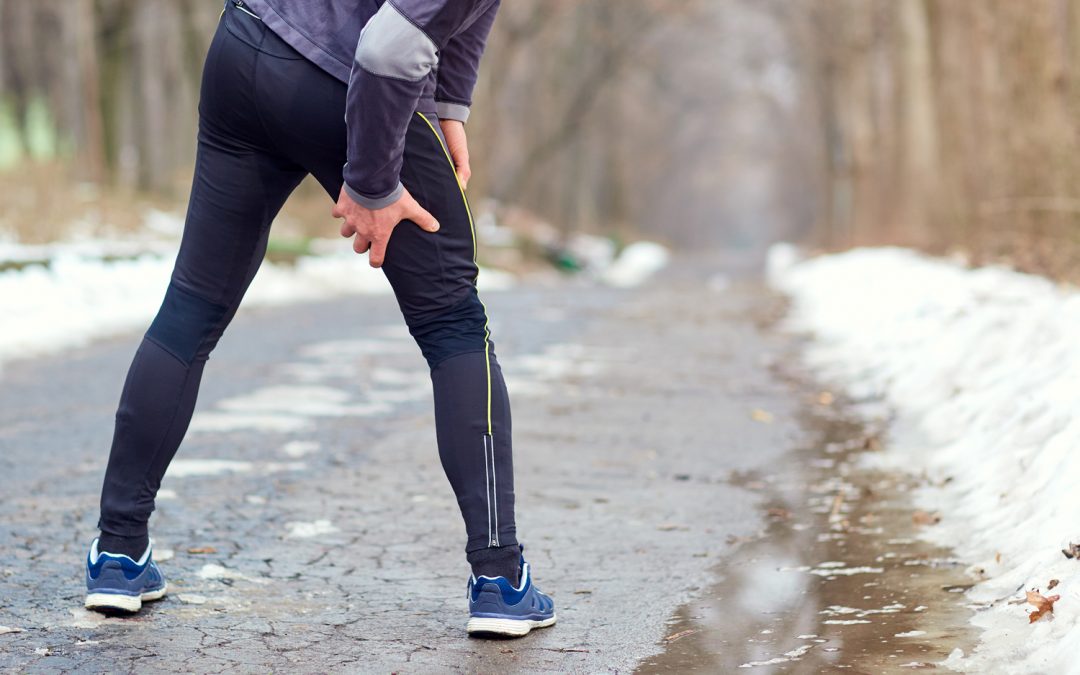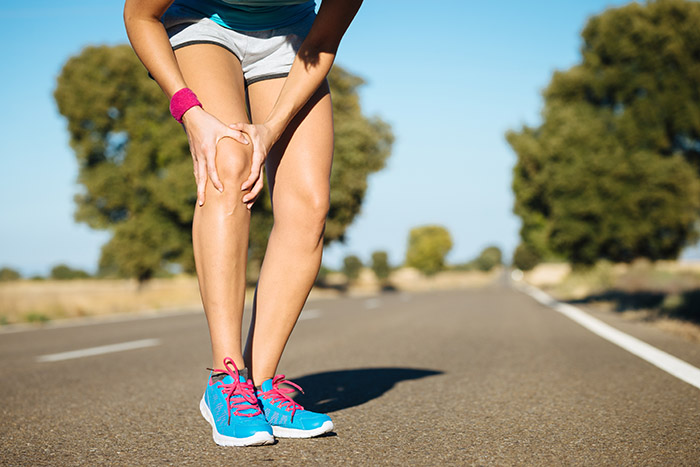
Monday 2 April 2018
The hamstring muscle group is undoubtedly one of the supporting elements of the leg, made up of the semimembranosus, semitendinosus and biceps femoris. These are also known as the posterior thigh muscles.
Talking about these muscles is useful firstly because this muscle group is involved in no small way in walking (in the first phase of support, for propulsion and during intermediate phases) and secondly because hamstring injuries frequently recur, often because we underestimate the rehabilitation (and extent!) of the injury, resulting in longer recovery times and frustrating periods of inactivity.
Should you injure your hamstring, entrust identification of the degree of injury, any instrumental examinations, physiotherapy, medications, strengthening, recovery times etc. to qualified professionals, respecting and listening to their opinion. Find a specialist your trust and stick with them during your recovery. Do not try and rush things.
Prevention is, however, better than cure to begin with. Not including the elements above that should only be assessed by trained professionals (e.g. posture, muscular imbalance and assessment of flexors/extensors), among the most common causes of injury are two practices that resistance runners do not much like doing: not stretching and poor warm-up. Often runners completely forego warm-up and stretching routines, which are actually essential.
Thinking about prevention, then, let’s start with warming up.
The winter season is now beginning and the cold is a runner’s worst enemy. This means you need to pay careful attention to strength preparation.
To activate your muscles, begin the session with 5 minutes at a very slow pace, before starting the actual warm-up, which should be 20 minutes, ending by gradually increasing your pace.
When it comes to stretching exercises, we are going to show you two very simple exercises, but for hamstring muscle reinforcement, which is a different thing altogether, refer to a physiotherapist. The exercises we are about to show you should be performed after a suitable warm-up.
1) Lie down on a mat. Put a rope around the sole of your foot and grab the two ends. Keep your knee straight and your foot at a right angle. Lift your leg towards the ceiling slowly and smoothly until you feel a stretch up the back of your leg. The first few times, hold for 10-15 seconds, but 30 seconds, then release your leg and repeat with the other leg.
2) Sit on the ground and spread your legs apart. Make sure you keep your knees straight and your feet flexed, as you did in the first exercise. Then, keeping your back straight, lean forwards slightly over your hips. You will feel tension in your hamstrings, hold it there for 30 seconds, then release and try to touch your right foot. The aim of the exercise is not to reach your foot, but just to create some slight tension in your hamstring and hold it for twenty seconds or so. Repeat for your left foot.
Lorenzo Andreini
Read more

Monday 26 March 2018
When you start out on a sporting journey, whatever else it is, it is without doubt a new relationship with your body. Of course it is!
When you do sport and move more you definitely feel more energetic, relaxed and fit. Sport is also about feeling better and doing things willingly! When we do sport, our bodies undergo a physical force and so, just like a machine in good working order, it needs to work to its full potential…and it’s here that diet plays a very important role: food nourishes every part of our biological machine, but it’s important to know how to choose the right foods, and to combine and vary them to make sure we get all the nutrients we need.
Doing sport doesn’t mean going on a diet (how frightening this word can be, right?). Think of the word ‘diet’ as ‘lifestyle’, and this is the concept we’re referring to: create the right lifestyle at the table too, in the same way as being physically active will become a lifestyle.
This way, we’re certain of having two ingredients which go hand in hand and which, together, are able to best express the power of the human body. Alongside these two pillars, it’s also important to consider all the other aspects that can help us gain or lose points in reaching the precious wellbeing we’d all like to achieve: stress, posture, sleep, relaxation… Certainly doing sport and eating a healthy, balanced and varied diet helps a lot in all these aspects of life, so all we have to do is get started…and so BRING A BIT OF KNOWLEDGE TO THE TABLE, find out more about what we eat, treat food properly, calmly accept any “slip-ups”, look for the right energy in food, enjoy and share food, and, above all, eat for nourishment…in this way, your body (and much more besides!) will thank you by making you feel like you’re performing better!
Dr. Francesca Fontanelli, Biologist-Nutritionist
Read more

Monday 19 March 2018
It’s not unusual to open Facebook and read about people who have just finished a long training session, who have run a marathon (or perhaps added another one to their CV), or who do workouts that we find incredible or unattainable.
For those of us who’ve just started running, reading about people who are able to cover distances that we could only imagine doing by car can be discouraging. But we should always keep in mind that even those who are able to run 42km once started from basic 5-10’ runs, and so you can do it too! We’re about to reveal to you the secrets for building up stamina.
What characteristics must an athlete have to ‘have stamina’, that is to say, being able to run for a long time?
– First of all, a word of advice: before starting any activities (competitive or otherwise) it is advisable to undergo a sports-medical examination beforehand to make sure that you are fit enough to do sport. Your GP can tell you more, but never underestimate this; there’s a reason why this is almost the first thing we say.
– There are no shortcuts! Put your mind at ease: if you can run long-distance, it means you’ve sweated first. To have stamina you need application and willpower. Which doesn’t mean overdoing it, but doing it cautiously. A trainer or even a training schedule can help you to start running regularly. But remember that only you can put in the time.
– Keep a steady pace. This is the key to building up stamina. We often see athletes start with one fast run a week, then do a second run a week later. Absolutely not. Ignore speed for the time being and focus on quantity. Start with a short distance that you know you can run at a constant speed and can easily maintain without being completely short of breath.
– Recover. Keeping a steady pace doesn’t mean that from now on you have to run every day. The body needs to recover. Allow yourself at least one rest day between one session and the next. It is said that for those who recover well, at the end of the week it will be like having done an extra training session.
– A little more each time. Especially at the beginning, it’s useful to always add something more than the previous session, respecting how you feel, which only you can interpret. If you want to develop an endurance base, generally you can add 2-3’ to each basic session you do. You’ll see that reaching 50’ is easier than you think. But without overdoing it, remembering the advice given above.
– Get rid of boredom. Choose safe, well-lit paths, and run at consistent times. But also change path now and again so that the sessions and tracks don’t become repetitive. Run with someone else who is more or less at the same level if you can, remembering, especially at the beginning, that everyone has their own pace and it’s not a race.
– Mix it up. Once you reach a decent basic time (20-30 consecutive minutes), don’t limit yourself to the usual slow session: add 80-100m stretches at the end of the training, run in a relaxed way, at average speed, recovering for 1’30” between each interval.
Lorenzo Andreini – FIDAL instructor
Read more

Wednesday 7 February 2018
When you run, your body undergoes dozens of micro traumas without you even realizing. A movement that seems, and indeed is, natural and easy after walking is, in reality, very complex and requires considerable and strain-inducing work on the part of joints, bones, muscles, tendons and ligaments. It is normal for an athlete to have an incident sooner or later.
What should you do when you find yourself in an unforeseen situation?
Many will have twisted an ankle, pulled a muscle, suffered a strain or sprain, just to give a few examples. These are incidents that runners often know all too well. These injuries cause inflammation in your body that presents itself in different ways, such as redness in the area, swelling, hot to the touch, pain, loss of functionality in the injured area.
What should you do if this happens to you? Follow the RICE process, which stands for Rest, Ice, Compression and Elevation. RICE is a mnemonic indicating 4 treatment steps for minor injuries:
REST: Rest is essential for tissue repair processes. Without rest, you may continue to aggravate the injured area and increase the inflammation process, as well as worsen the pain, causing further damage. The risk of underestimating an injury is creating further damage and increasing recovery time. Rest for 24-48 hours and if the pain has not significantly reduced in that time, visit a physiotherapist or an orthopaedic doctor.
ICE: Use a bag of ice (or another method, but do not put the ice directly onto your skin) for the Rest time, applying it to the affected area for 20 minutes every hour (no more), depending on your other commitments. This helps to reduce inflammation and pain.
COMPRESSION: Serves to reduce oedematous swelling following inflammation. It can be very difficult to avoid, but excessive swelling causes major loss of function in the area, as well as pain and longer healing times. Should you twist your ankle, for example, the advice is to call a physiotherapist immediately as they will know how best to manage your symptoms, maybe even applying an elastic bandage.
ELEVATION: By lifting the area above the level of your heart, you are aiming to allow blood to go back into the circulatory system, thus reducing oedema, swelling and pain.
By Lorenzo Andreini
Read more

Wednesday 27 December 2017
In order to be successful in your training and race performance, you must pay attention to your food intake. There are no magic foods or perfect combinations, but you need to be familiar with nutrition. Applying it carefully is a great source of wellbeing and keeps your body in shape, as it is well stocked.
A balanced diet means getting nutrients in the right amounts for your tissues to maintain themselves, repair themselves and grow, as well as maintaining a balance of energy. An individual’s estimated need, therefore, should take into account various factors, such as sex, age, physical characteristics, daily energy usage and other extrinsic factors, such as differences in digestion, absorption and assimilation of various foods. The energy requirements of a particular sport should also be considered, as well as individual food preferences.
A runner obviously has different needs compared to someone who is sedentary, but also different needs compared to sportsmen and women in other disciplines or less heavy athletic specialisms.
There is not, therefore, one single diet for optimum physical exercise, but careful planning should follow the guidelines for healthy nutrition.
Let’s look at the most crucial points:
- Having a varied diet
- Balancing food consumption, and therefore calorie intake, depending on the type and intensity of training
- Choosing a diet rich in unprocessed vegetables, fruit and cereals
- Choosing a diet low in fat, saturated fatty acids and cholesterol (animal fats)
- Having a diet with low sodium and salt content
- Moderating alcohol consumption
- Choosing foods with a low/moderate glycaemic index: in the case of a high glycaemic index (e.g. pasta), try not to have too much and always accompany with other nutrients and fibre
With this in mind, using the food pyramid, which can be found on numerous specialist websites or publications about nutrition, is very helpful as a basis to plan your own diet.
In relation to pre- and post-race diets or using food during long distance races, there are some special factors you need to take into account, which we will look at in the near future.
Professor Augusto Innocenti, PhD – Nutritional Biologist, Professor at the University of Parma and the University of Pisa, and Massimo Santucci
Read more








